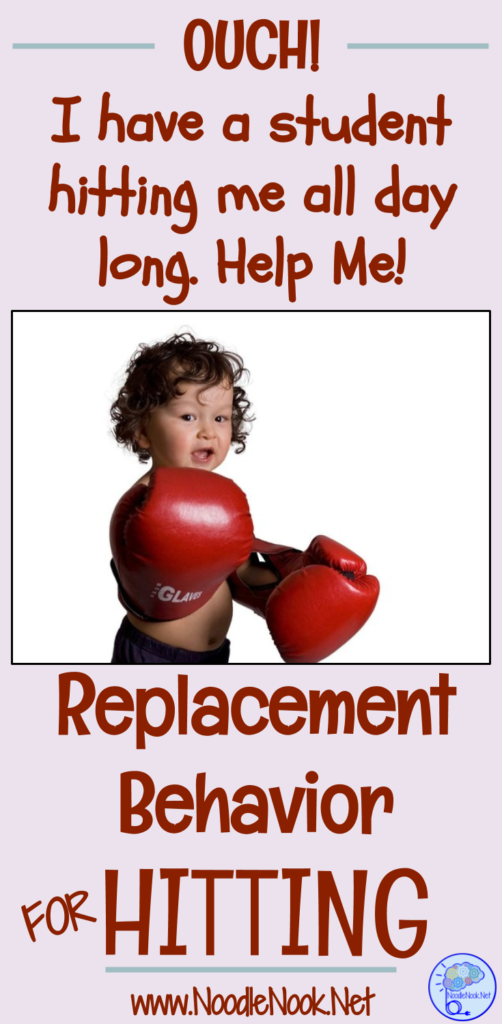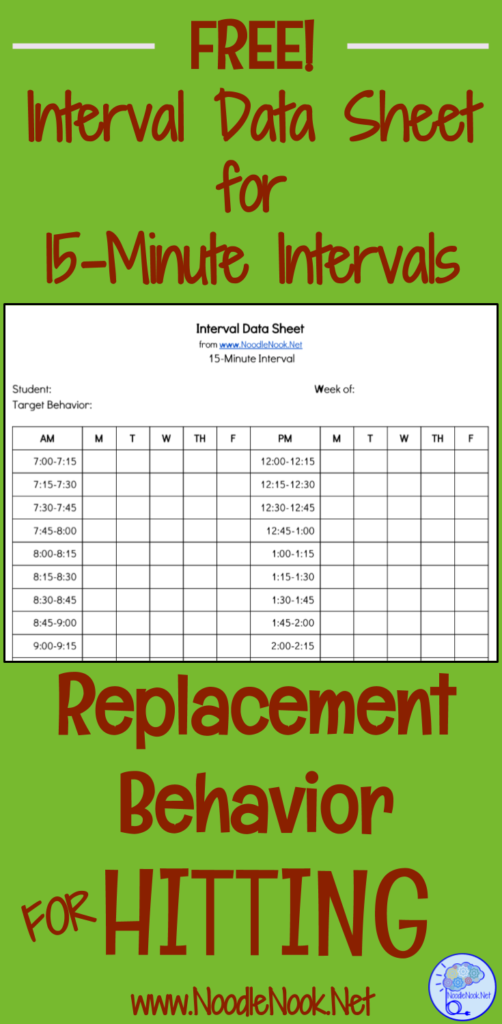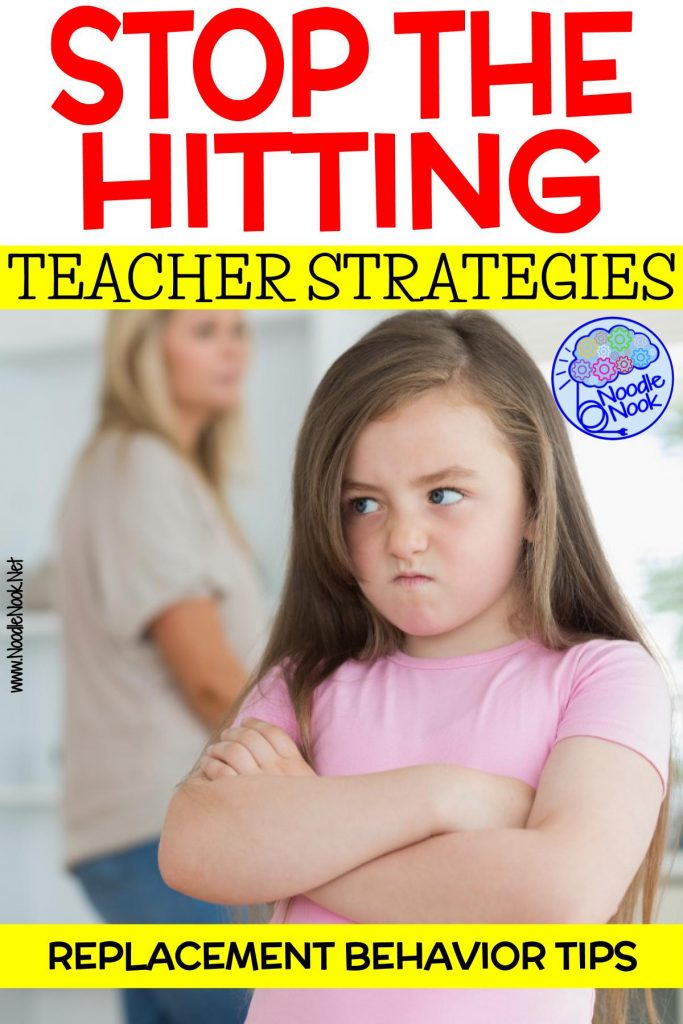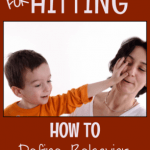Replacement Behavior for Hitting
I’m getting the crap beat out of me. Help!
So, unfortunately, this is an actual conversation that I’ve had recently. It’s hard to get up every morning and go to work when you know you are going to get hurt.
So what should you do?
Where do you even start?
4 Steps to Replace Hitting Behavior
The good news is you can change Behavior. The bad news is it’s going to take a little while. So, first things first, here are the four steps to changing Behavior.
- Defining the Behavior
- Collecting Data
- Determining the Function
- Designing the Behavior Plan
It seems like such a no brainer, but when you are sitting in a classroom getting the snot smacked out of you all day long it gets hard to think things through logically. The only thing running through your head is how to make it all stop.
So let’s break down these four steps a little more.
1. Defining the Behavior
I know, I know. The behavior is the fist flying towards your face. But there is more to defining the behavior. You need to describe exactly what the behavior looks like. Be very specific. Can anybody who walks into the room replicate the behavior based on how you are describing it? The big thing here is not to talk in Broad strokes but to be very specific, as specific as possible.
And there is a reason for this. Sometimes we talk and broad generalities, like “Bobby keeps hitting me”, and there’s actually a lot of things inside of that broad description.
I had a teacher who called me in for support. She explained to me that a student was hitting her upwards of a 80 times a day. Oh My! I knew I had to help and when I arrived in the classroom I started to observe.
The student was hitting the teacher, but the hits were not what I imagined. At best (to me) they were butterfly kisses. He was barely touching her but he was doing it over and over again. I think the teacher was just on her last nerve.
It’s easy to see how her definition of hitting all day and my definition of hitting all day were two different things. That’s why it’s so important to start by clearly defining the behavior. That’s where you can start on the replacement behavior for hitting.
2. Collecting Data
Next up… Collect some data. Again, this seems so easy in talk, but it’s much harder in walk. There are so many data collection forms and methods- what exactly are you looking for?
To start, it is easiest to look at how many times the target behavior is happening. If you are getting knocked out multiple times a day and all day, you may start with a basic Interval Data Collection Sheet. I have one here for you as a FREEBIE (Yay)! It comes from the Behavior Analysis Data Collection Sheets and Guides printable in the store. I like the way you can look at the guide chart to see what kind of data sheet you need depending on the behavior you’re targeting.
So, as the guide points out, if you are working on behavior that occurs at a high frequency, use the interval data collection method. Once you have a little bit of data to start with you may be able to see trends. Maybe the behavior happens when it is time to transition or when there is a lot of sensory stimulation happening. Maybe it is mostly in the morning or afternoon. Once you have the data you can really see when the hitting happens.
NOW… after you find when you are seeing spikes in behavior it is time for a good ol’ fashion ABC analysis. What is ABC? Antecedent, Behavior, and Consequence. This is an entire mini lesson in and of itself, so please see the post HERE for more on getting your ABC done.
So now that you can clearly identify when the behavior occurs and have some idea about the Antecedent (before), Behavior (during), and Consequence (after) you can move on to function.
3. Determining the Function
Almost all behavior comes from wanting something (me getting up to walk in the morning so I can eat more guilt-free-chocolate throughout the day) or avoiding something (me eloping to hide from my kids so I can eat said chocolate without sharing).
Overshare?
Your student has the same motivation- they want something or want to avoid something. Figuring out the function is going to help you determine what you can do to get the same consequence for the student (C) without the behavior (B).
To elaborate a little more with hitting in mind, you may see the following functions:
Attention Function
- Teacher is talking to another student
- Student hits teacher/self/another student
- Teacher pays attention to student to deliver consequences
- Student smiles inside
Tangible Function
- Student knows there are chips in the classroom
- Student starts to hit teacher
- Teacher says ‘STOP’
- Student stops
- Teacher gives student a chip for ‘not-hitting’
- Student smiles inside
Escape Function
- Student hates math
- Teacher “Let’s do some math!”
- Student hits teacher
- Teacher sends student to ‘time-out’
- Student smiles inside
Avoidance Function
- Student is asked to transition to math and does not want to
- Teacher repeats request
- Student starts hitting teacher
- Teacher redirects student, talks to them about why it was wrong, and makes student write an apology.
- Student delays the math lesson for a super long time
- Student smiles inside
Sensory Function
- Student is asked to work
- Student hits self or teacher
- Teacher tries to redirect
- Student starts hand flapping and hitting teacher more
- Student smiles inside
- (Sensory stimulation from hitting teacher and from hand flapping -OR- from being restrained… so they hit until they are restrained to get the sensory stimulation.)
So there are a few ways the function of hitting behavior can play out depending on the student. Be sure you are open to all possibilities and really examine the things happening before the behavior- what is being asked? What is the situation around them? What is the real trigger?
To read more about the function of behavior, check out this post HERE.
Designing the Behavior Plan
Hopefully you have identified the behavior, taken some data to see trends, and determined the function of the behavior… here comes the easy part.
Okay… maybe not EASY but totally doable. It’s time to design the Behavior Plan.
Big question you have to answer at this point is what do you want the student to do instead of hitting- and remember the function!
If it was attention seeking, what do you want them to do to get attention the right way? If it was to get a Tangible- how can they get what they want? Same with Avoidance & Escape- what do you want them to do instead?
Biggest thing here is that NOT doing something isn’t a replacement. Example:
‘Student will refrain from hitting.’
This has no place in your plan. What may work is:
(For escape) When given non-preferred activities, Student will request a break by pointing to the break icon. He will be given a break for 3 minutes (using a timer) and then return to work.
Here we are stating what a student will replace the behavior with and we will have to train the student on how to do this and what it looks like.
Biggest take away here is that you MUST know the function of the behavior in order to get a meaningful and effective replacement behavior. Then choose a replacement behavior for hitting that gets the student the same functional outcome. Without that, you will never stop the hitting behavior.
Replacement Behavior for Hitting
Putting it all together sounds easy, but it is actually a challenge. Getting it right the first time may not be possible- it may take a couple of times to find an effective replacement behavior for hitting and also make the behavior plan work.
Don’t be afraid to try a couple of things- but be sure to give each option a real try (not ‘Oh, we tried it once and it didn’t work so we stopped doing it altogether…”). Do it, take data, and look for new trends.
Now go forth and teach on!







